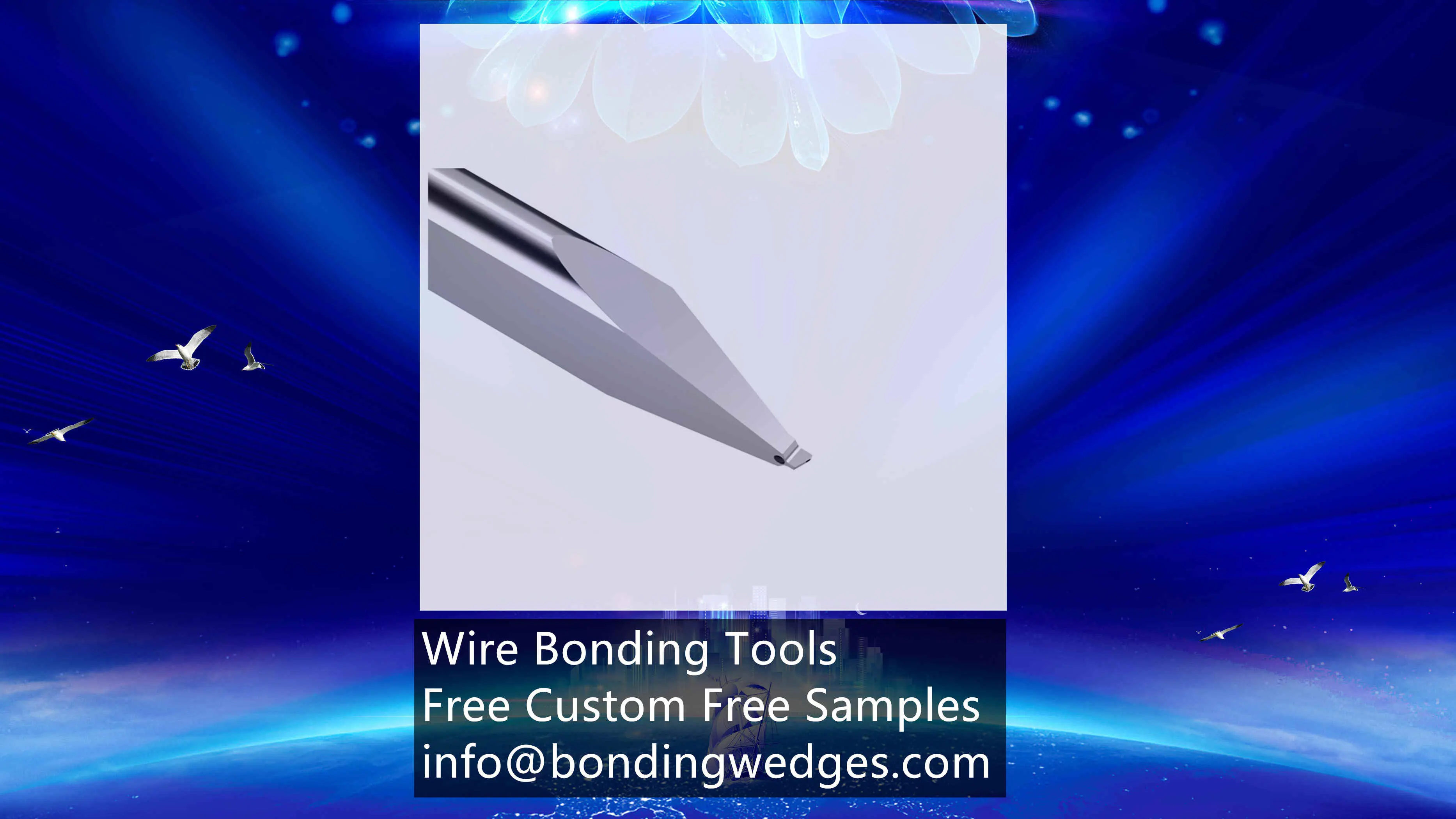The Enduring Relevance of Wire Bonding
The Evolution of Wire Bonding
Despite long-held expectations that wire bonding would be supplanted by advanced packaging techniques, more than 80% of semiconductor packages still rely on wire bonding for assembly today. Its established reliability, cost-effectiveness, and well-developed chip manufacturing processes (which do not necessitate ultra-high interconnect density) indicate that it is likely to remain relevant for decades to come.
According to the latest report from Technavio, the wire bonding equipment market is projected to grow at a compound annual growth rate of 3.3% from 2022 to 2027, with an anticipated market size increase of $219.24 million during this timeframe. This growth is fueled by the rising electronic content in automotive applications and the rapid expansion of the OSAT industry, particularly in Asia-Pacific regions.
For decades, gold (Au) bonding wire has been the industry standard, and for good reason. Its unmatched chemical stability, corrosion resistance, and reliability make it a suitable material for semiconductor packaging. However, this dynamic began to shift as gold prices skyrocketed by 478% from 2001 to 2011. Manufacturers began seeking viable alternatives that could provide lower costs while maintaining similar or superior conductivity.
Copper has emerged as the clear choice due to its cost-effectiveness and outstanding electrical and thermal conductivity. Although copper prices surged nearly 700% during the same period, its peak price of $4.58 per pound remains significantly lower than gold’s price of $2,100 per ounce. Moreover, copper can carry the same current as gold using smaller diameter wires without overheating, making it particularly appealing. Additionally, its slower reaction rate with aluminum improves its reliability, especially under prolonged high-temperature storage conditions.
“You need to achieve high-quality and highly reliable wire bonding, and many factors influence this objective,” said Per Viklund, Director of IC Packaging and RF Product Line at Siemens EDA. “The appropriate wire material must be chosen based on electrical and bonding performance, and the correct metal bonding process must be employed. Ultimately, what you aim for is a bond that will never come loose on its own.”
The Growth of Automotive Electronics Drives the Shift to Copper in Wire Bonding
Modern vehicles can now be equipped with over a thousand integrated circuits (ICs). While gold is still utilized in certain automotive applications, copper has demonstrated greater reliability in harsh environments and high temperatures, thanks to its superior thermal conductivity and elasticity over time.
“When utilizing automotive power modules, specific requirements arise for wire bonding, particularly concerning very high current and very low inductance,” Viklund noted. “You can implement specialized techniques for these designs, but there are physical limitations that restrict the addition of an infinite number of bond wires. That simply isn’t practical.”
The automotive sector is increasingly dependent on a range of advanced electronic devices, from engine control units to driver assistance systems, which demand materials that can consistently perform under challenging conditions, with defect rates below one in a billion, or one defect per billion kilometers. The intrinsic properties of copper, including its high melting point and excellent conductivity, make it especially well-suited for these needs.
“Historically, gold wire has been the material of choice,” stated Prasad Dhond, Vice President of Amkor Wirebond BGA Products. “It’s easier to handle and is a softer material, but it has faced some challenges during automotive reliability testing. Naturally, cost is also a major consideration.”
Reliability concerns with gold at elevated temperatures over extended periods include the formation of Kirkendall voids at the interface between the wire on the chip and the aluminum pad. These voids do not form in copper-aluminum bonding.
Challenges Faced by Copper in Wire Bonding
Despite its advantages in cost and thermal conductivity, copper also encounters challenges in wire bonding. The complexities involved in its use necessitate advanced equipment and specialized expertise. Alternatives like palladium-coated copper wire, while harder and more expensive than pure copper, still remain less costly than gold and offer significant corrosion resistance. Additionally, copper must be processed in an oxygen-free synthesis gas environment consisting of 95% nitrogen and 5% hydrogen.
“You want to create a strong, reliable bond between the materials,” stated Chris Davis, Product Line Manager at Nordson Semiconductor Products. “However, copper is prone to corrosion, which means you cannot use other metals in its vicinity, as this could lead to galvanic corrosion. With gold and aluminum, you may encounter purple plaques. Copper is the most economical option, gold is the priciest, and aluminum falls in between, but aluminum can only be bonded using specific processes and is quite challenging to work with due to its oxidized surface. There are always trade-offs to consider.”
Automotive Drives Change
Until approximately 2010, the semiconductor industry predominantly utilized gold wire for lead bonding in packaging. However, as gold prices surged, the industry transitioned to copper wire bonding, enabling chip manufacturers to lower packaging costs. Initially, automotive manufacturers hesitated to adopt copper due to its limitations and the absence of long-term testing for copper wire bonding in critical applications under harsh conditions. This dynamic has shifted as copper has demonstrated greater reliability in high-temperature and high-vibration environments.
“In the automotive sector, copper wire has become the preferred option,” Dhond stated. “From a reliability perspective, customers favor it. Over the last decade, there has been a notable shift towards copper, and nearly all new automotive products we introduce now utilize copper wire.”
One challenge associated with copper is that the heat required for bonding can render it unsuitable for chips with delicate bonding pads or those sensitive to high temperatures. Its rigidity can also complicate the formation of consistent and reliable loops, particularly in fine-pitch applications. Furthermore, the oxidation of copper may lead to reduced electrical performance and potential long-term reliability concerns.
For these applications, silver alloys can deliver performance comparable to gold while being priced similarly to palladium-coated copper. Silver offers superior thermal conductivity and lower resistivity compared to copper, making it an excellent choice for power electronic devices. Its elasticity and hardness provide a balance between gold and copper, simplifying the bonding process, and its lower melting point helps safeguard fragile bonding pads. Additionally, silver wire bonding is less susceptible to corrosion than copper.
Pure Silver and Its Applications
Pure silver (Ag) is naturally soft, making it unsuitable for direct application in wire bonding. To overcome this limitation, silver is commonly alloyed with palladium (Pd) and gold in varying proportions based on specific requirements. Additionally, silver’s high reflectivity makes it the preferred material for LED packaging, where maximizing light output is crucial.
Aluminum as an Industry-Standard Wire Bonding Material
Aluminum has been utilized for nearly as long as gold and has unique properties that make it an excellent choice for various applications. It is compatible with aluminum pads on chips, enabling bonding at low energy levels at room temperature, which helps protect sensitive devices from damage.
Similar to pure silver, pure aluminum is relatively soft, though it is stretchable. To improve its mechanical properties for specific applications, it is often alloyed with elements like silicon, typically at around 1% content, and sometimes with magnesium. These aluminum alloys can produce finer, stronger wires.
Aluminum’s high electrical and thermal conductivity makes it the preferred option for power devices and signal transmission. While it is frequently used in low-frequency applications such as radio and audio devices, power supplies, and thermostats, its versatility allows for a wide range of uses. Aluminum is bonded using wedge bonding technology, which can limit its application in ultra-fine pitch scenarios. Furthermore, aluminum’s tendency to oxidize makes it less suitable for environments where high purity and corrosion resistance are essential.
“Different materials present unique challenges, especially when fusing one material to another,” Viklund noted. “The wire must reliably bond to any material on the chip’s top surface. The ongoing question has been how to effectively weld the wire to the chip and ensure it remains secure. It involves considerations of aluminum, gold, copper, and various alloys. The decision hinges on electrical performance, bonding effectiveness, and ultimately cost. Achieving the right balance among these factors is crucial; otherwise, it may not be embraced by your customers.”
Conclusion
Amidst the constantly evolving technological landscape, wire bonding continues to showcase its adaptability and significance. As semiconductor devices become smaller and more complex, wire bonding has evolved by integrating new materials and refined techniques to tackle the challenges posed by modern electronic products. Although alternative interconnection methods, such as flip-chip technology, have emerged to fulfill specific requirements, wire bonding remains the primary method for connecting chips to packages.
The industry’s transition from gold to copper, driven by economic and performance considerations, highlights the flexibility of wire bonding. Furthermore, the growing complexity of memory applications that utilize multi-layer architectures underscores the demand for wire bonding solutions capable of handling intricate designs without sacrificing reliability. As the semiconductor industry progresses, the resilience and innovative legacy of wire bonding suggest that it will continue to be an essential component of the industry’s future, adapting and thriving in the face of change.
Contact Us
For any questions regarding our products or solutions, kindly entrust them to us and we will respond within 24 hours.
KeyWords
Wedge Bonding ToolWedge Tool
Bonding Wedge
Au Wire Bonding
Concave wedge Tool
Wedge Bonding Machines
Wire Bonding ToolsBonding Equipment SuppliersFine Pitch Bonding ToolsWedge BonderWire bonding equipmentSemiconductor bonding toolsPrecision bonding toolsHigh-performance wire bonding toolsSemiconductor industry toolsBonding tool manufacturerCustomizable wire bonding solutionsQuality wedge bonding equipment





